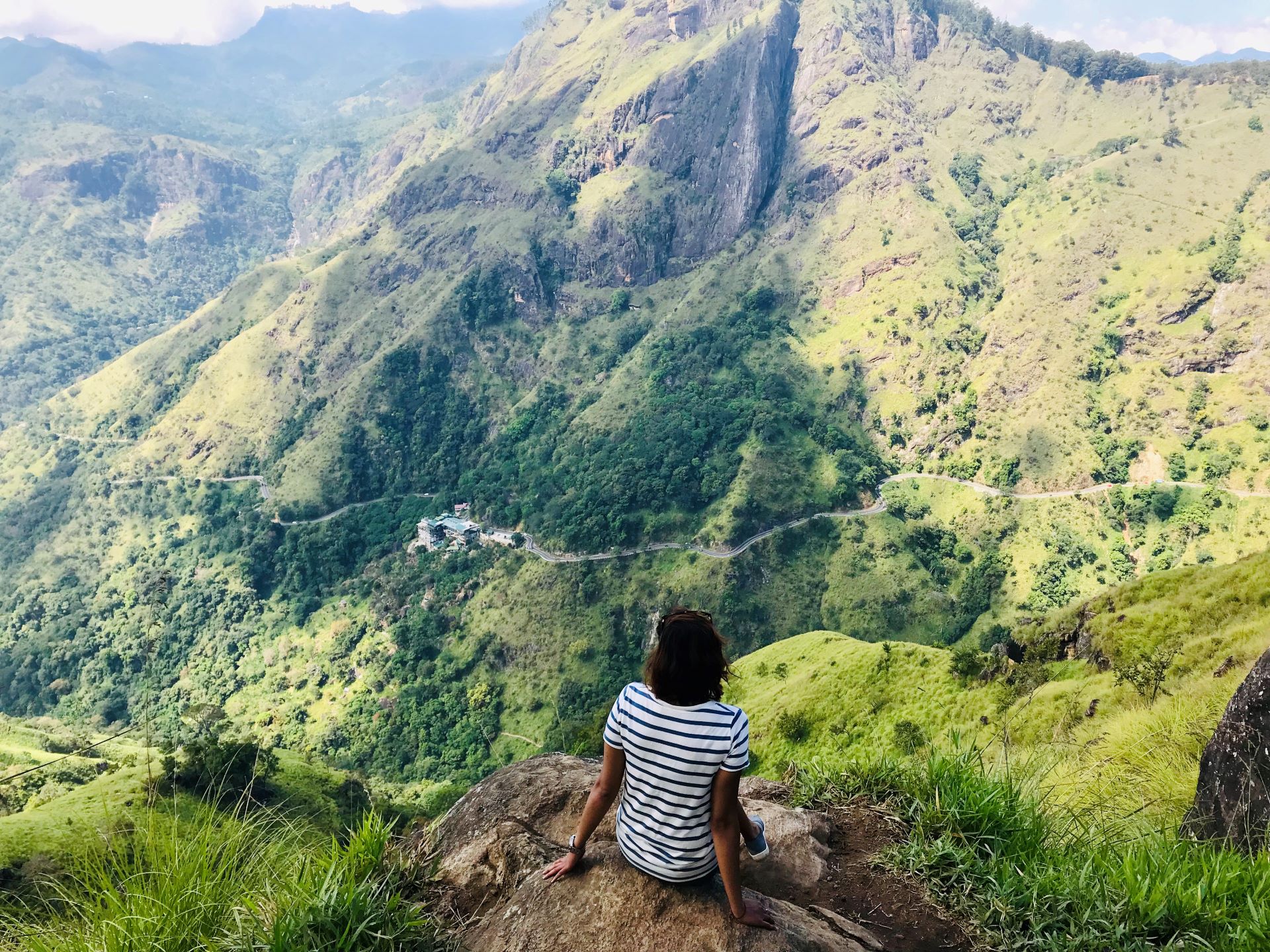Experience one of the largest wild elephant gatherings in the world at Minneriya National Park
16th October 2024
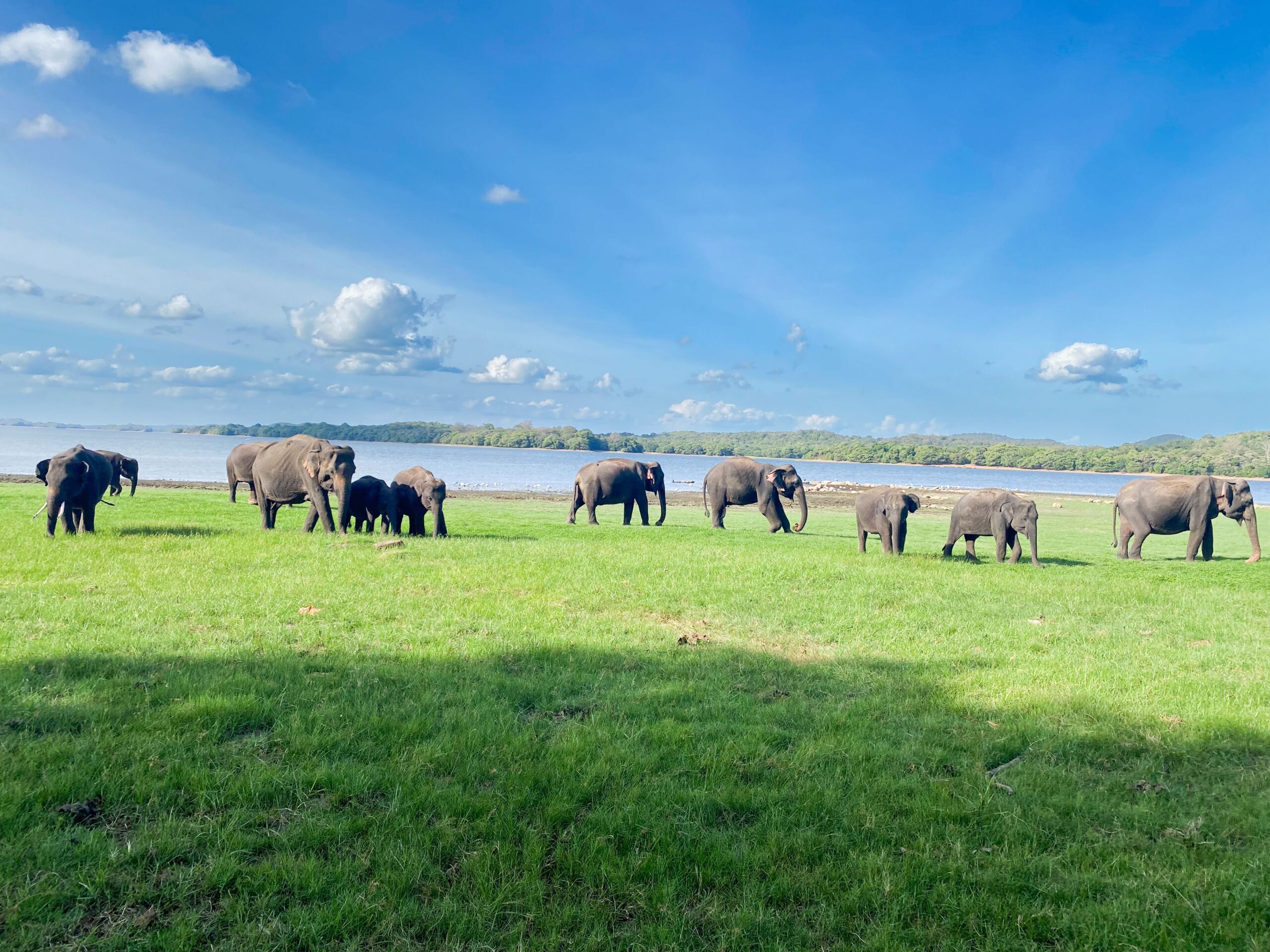
16th October 2024
Why visit Minneriya National Park?
Imagine you’re on a safari jeep with a view of the grassland, a lake, overlooking the mountain range and in the distance you see herds of wild elephants with their little ones, playing, throwing mud at each other and enjoying their life in the wild. That is what you will experience here at the Minneriya National Park.
Seeing animals in the wild is one of the best travel experiences you can have and you’re sure to experience these wild elephants up close and personal during the safari. Minneriya national park is one of the best places to go on safari in Sri Lanka.
Minneriya national park covers an area of 8889 hectares of land, the elephants gather around the lake, as the lake dries out and the area gets smaller you will see more elephants gathered around the small area.
The Minneriya Reservoir is a man made lake that was built in the 5th century for the irrigation of the nearby padi fields, the annual coming together of these gentle giants to enjoy the lake is said to be one of the largest elephant gatherings in Asia and definitely not an experience to miss.
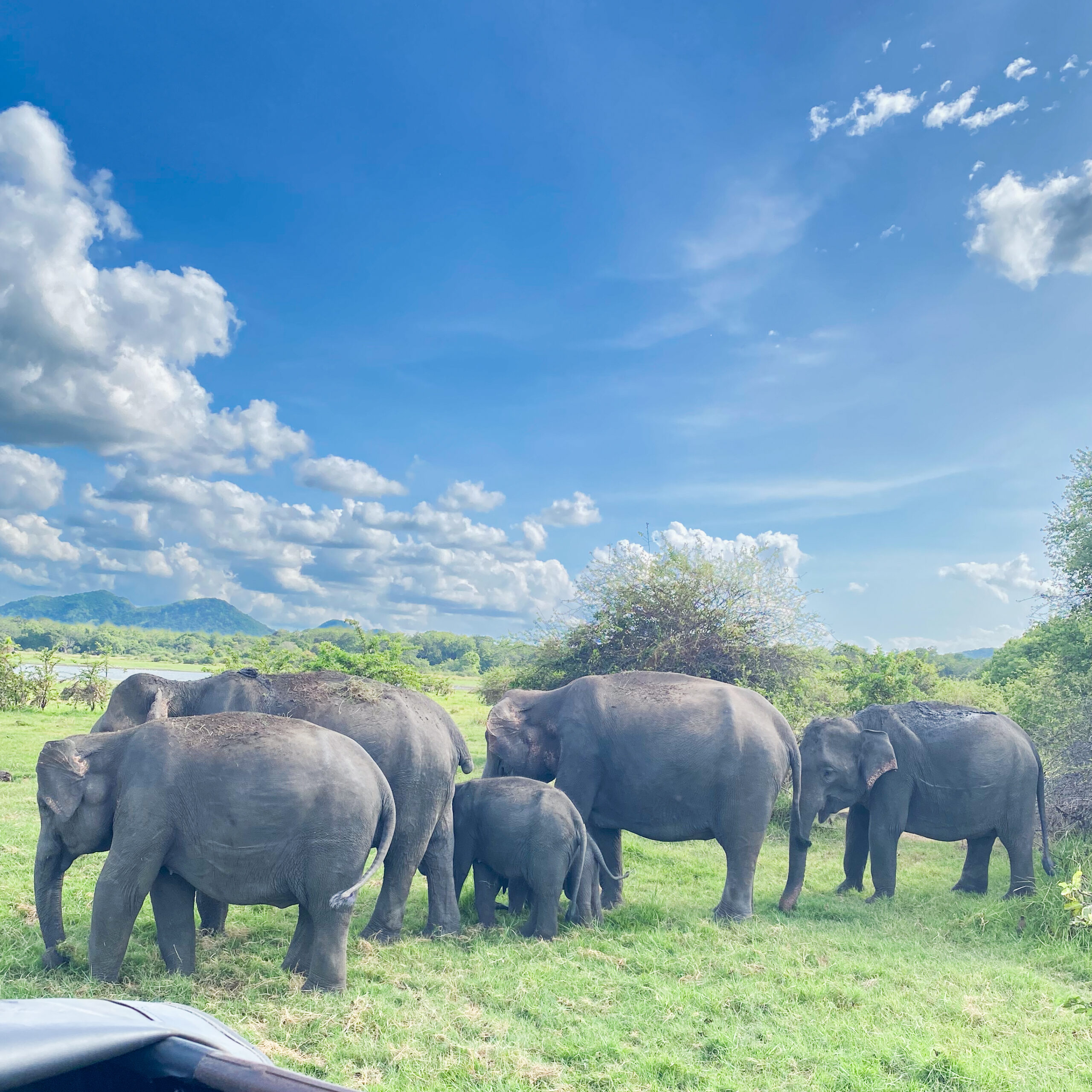
Where is Minneriya national park?
Minneriya national park is located about 200 km from Colombo, it takes approximately 4.5 – 5 hours by private vehicle.
Located near the cultural triangle in the north central province, the national park is easily accessible by road. Nearest city being Habarana and there are plenty of accommodation options and services around the area.
As Minneriya National Park is located near some of the key attractions including Sigiriya and Dambulla golden temple it can be easily added to your itinerary without much planning and effort.
Best time to visit Minneriya?
Best time to visit Minneriya National Park is during the dry season between July and October. During the dry season the flat grassland becomes a feeding ground for the elephants. During the season you can expect to see up to 200 elephants gathered around the reservoir.
Minneriya National Park is part of the elephant corridor that joins up with Kaudulla and Wasgamuwa national parks therefore giving the elephants the opportunity to move around.
During the wet season the grassland get flooded and the elephants tend to hide inside the thick vegetation as water is easily accessible and sometimes even migrate to the neighboring national parks such as the Hurulu Eco Park and Kaudulla National Park.
The first time we went to visit Minneriya National Park was in June and it was flooded and none of the tours were operating. They gave us the option to visit Hurulu Eco Park but we opted not to as we wanted to experience the mass gatherings at Minneriya.
What to wear?
As you travel from Dambulla to Habarana, you will notice a slight change in the climate as it gets hotter and drier. The day we went it was a nice and sunny day with clear blue skies. We went up totally unprepared, we forgot to wear sunscreen, forgot that the jeep would be open and ended up getting sunburnt. So be sure to wear plenty of sunscreen, wear sunnies and caps to protect your skin.
Also it is advisable to wear loose comfortable clothing and wear comfortable shoes as the safari is 3.5 – 4.5 hours in the heat. Carry a bottle of water with you at all times and if you’re carrying those plastic bottles be sure to dispose of them responsibly as there are bins at the entrance of the national park.
Minneriya National Park Safari
Minneriya National Park Safari can be organized easily through your hotel/accommodation or by doing a quick google search and checking reviews which is what we did.
If you’re staying close to Habarana there are plenty of safari operators by the road waiting but it is advisable to get one that is recommended by your accommodation or one that has good reviews. The safari operators normally would pick you up from the hotel/accommodation depending on where you are staying. If your accommodation is further out you can either get the safari operators to pick you up from the hotel at an additional fee or meet halfway by catching a tuk tuk.
We were staying at The River House in Dambulla so we opted to drive to Habarana. The drive was around 40 minutes from Dambulla. Once we met the tour operators, we were taken to another location where we could leave our vehicle and get on their 4WD.
The drive to the national park is another 20 minutes away and you will notice electric fences to stop the elephants from coming onto the road.
How to plan a great Minneriya National Park Safari
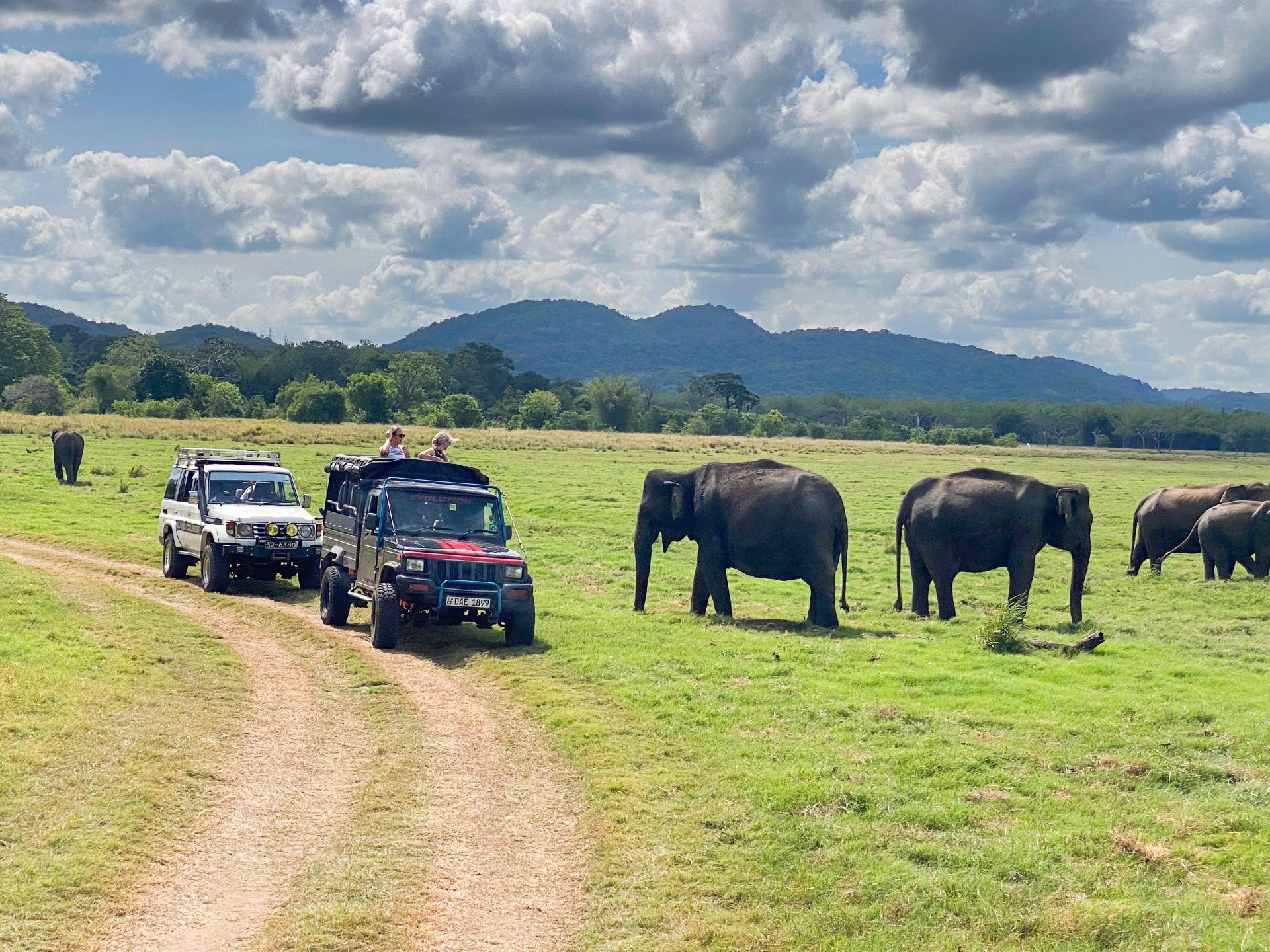
Pick a safari operator by doing a quick google search or by asking your accommodation if they know anyone that they would recommend. The Safari operators we used were Minneriya National Park Safari with over 171 reviews with a 4.9 rating.
When we called to organize the Safari the safari operators suggested the evening safari starting at 1.30pm – 2pm for 3.5 hours, as more elephants seem to come out in the afternoon therefore increasing the likelihood of seeing more elephants. He also said that these days they have been spotting more than 150 elephants, initially it seemed like an exaggeration, nonetheless it got us all very excited.
The Safari Operators were helpful and friendly. The cost of the safari was Rs 13,000 plus the cost of the entrance tickets which was Rs 150 p.p. for locals and 25 USD p.p for foreigners.
The national park opens at 6am and closes at 6.30pm however the Safari operators are given an exit deadline of before 6pm. Our Safari operators advised that if they got late then they would be suspended from operating tours for 1 month which is a huge loss for the business. So please be mindful when opting for the evening tours to leave early.
The tour normally lasts for 3.5 – 4.5 hours. You can also opt for the morning tours starting at 6am as well however it is advisable to ask the tour operators the best time as they will be able to suggest the best time to spot most of the elephants.
During the peak season it is advisable to book the tours in advance to ensure you get a good tour operator. You can also opt to share the 4WD with others as the vehicle can accommodate 6-8 people comfortably.
If you’re a solo traveler you will easily be able to find a 4WD to share at the entrance as there are many parked vehicles you can approach. Most of the time they will be happy to share the ride, then pay your share of it. There were 4 of us so we opted to have our own 4WD however there were many sharing the rides with others. The 3.5 hour safari we opted for was more than enough to spot many elephants and other wildlife.
When organizing the safari operators it is advisable to discuss the costs associated up front and be clear about whether the costs quoted include entrance fees or not. You can pay the driver the cost of the tour and pay the entrance fee yourself, this way you know you are not being overcharged. The tickets can be purchased at the entrance and can be paid for using cash or card option.
At the end of the tour, depending on the service that you received you can also opt to pay the driver an additional tip. This is not a must but is quite common.
What to expect during the Minneriya National Park Safari?
From the entrance to the floodplains there are many paths. The roads are rugged and dry with low hanging branches and vegetation. The drive is another 20 minutes inside the national park. Then you emerge from the dense vegetation onto a vast, open grassland with views of the mountain ranges.
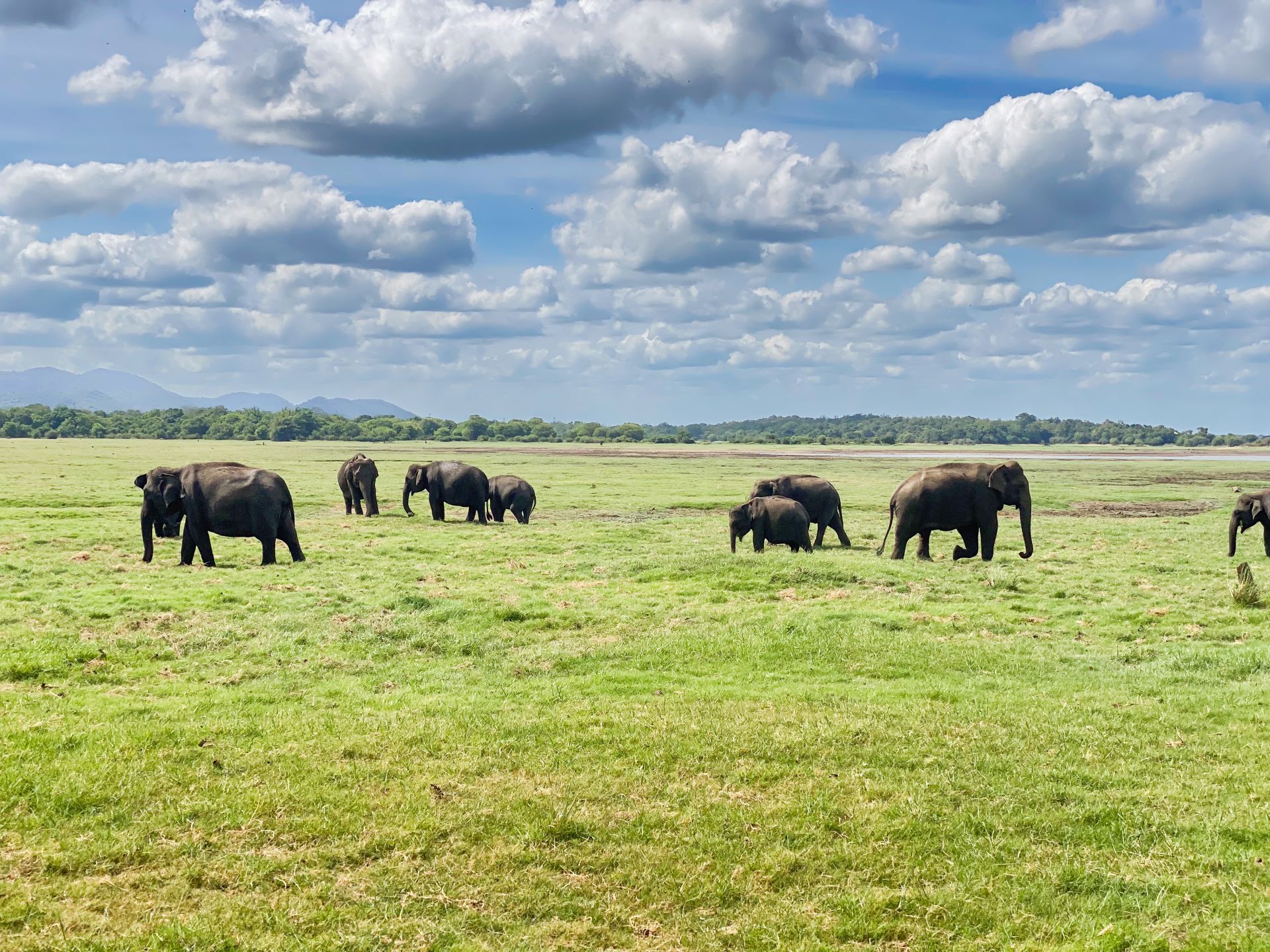
The Safari is very well organized, all the drivers are certified, experienced and familiar with the different routes. All the 4WD have open sides and roof which gives you a great view all around and you have the option to stand up for a 360 view.
Although we went on a weekday there were quite a few jeeps, mostly tourists but everyone was very respectful and kept their distance.
Once you approach the flood plains you’ll start to see the herds of elephants grazing in the distance. Some of them by the water, laying down in the mud or playing around and being cheeky. We also saw quite a few baby elephants, surrounded by the females and well protected.
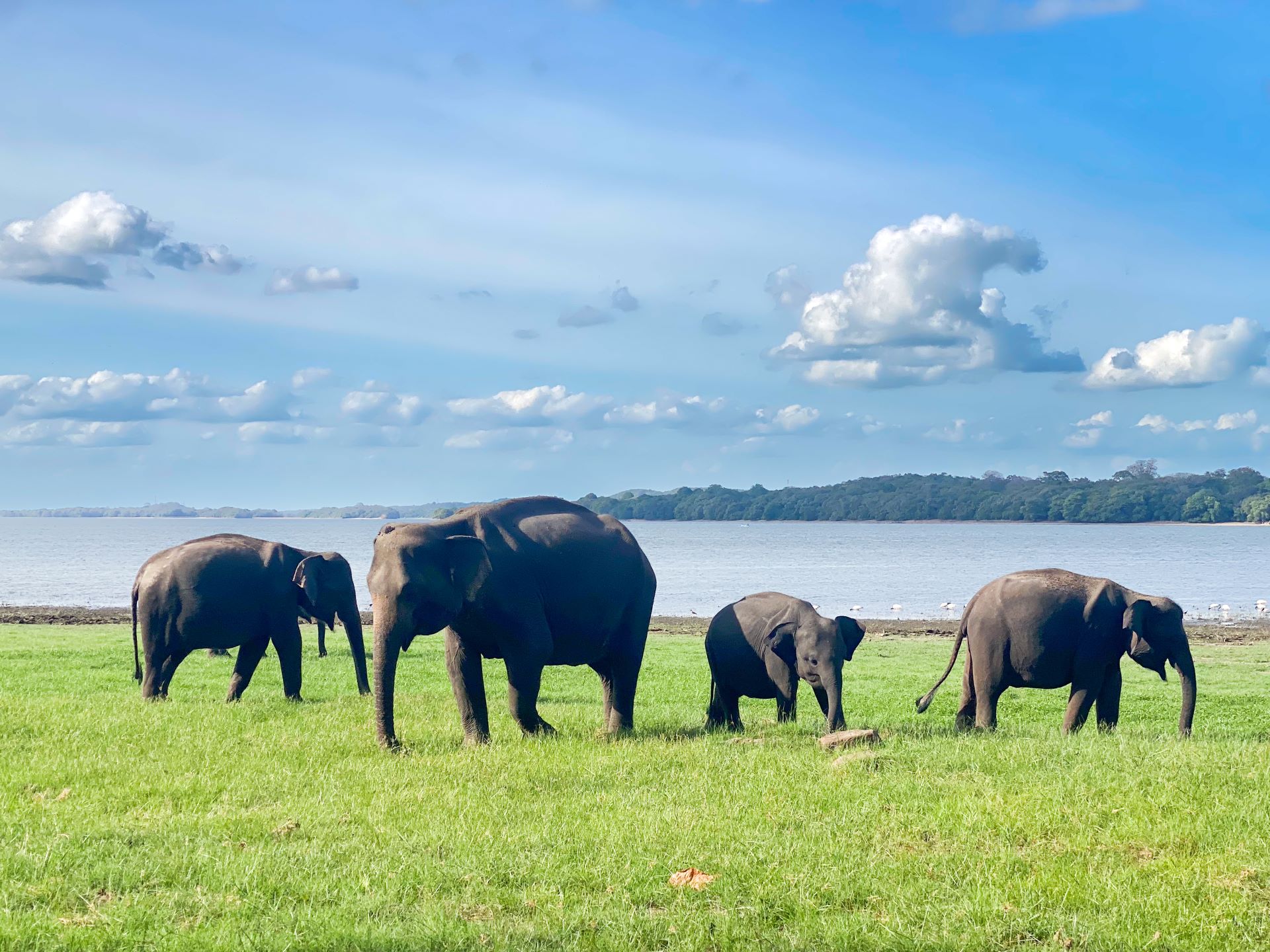
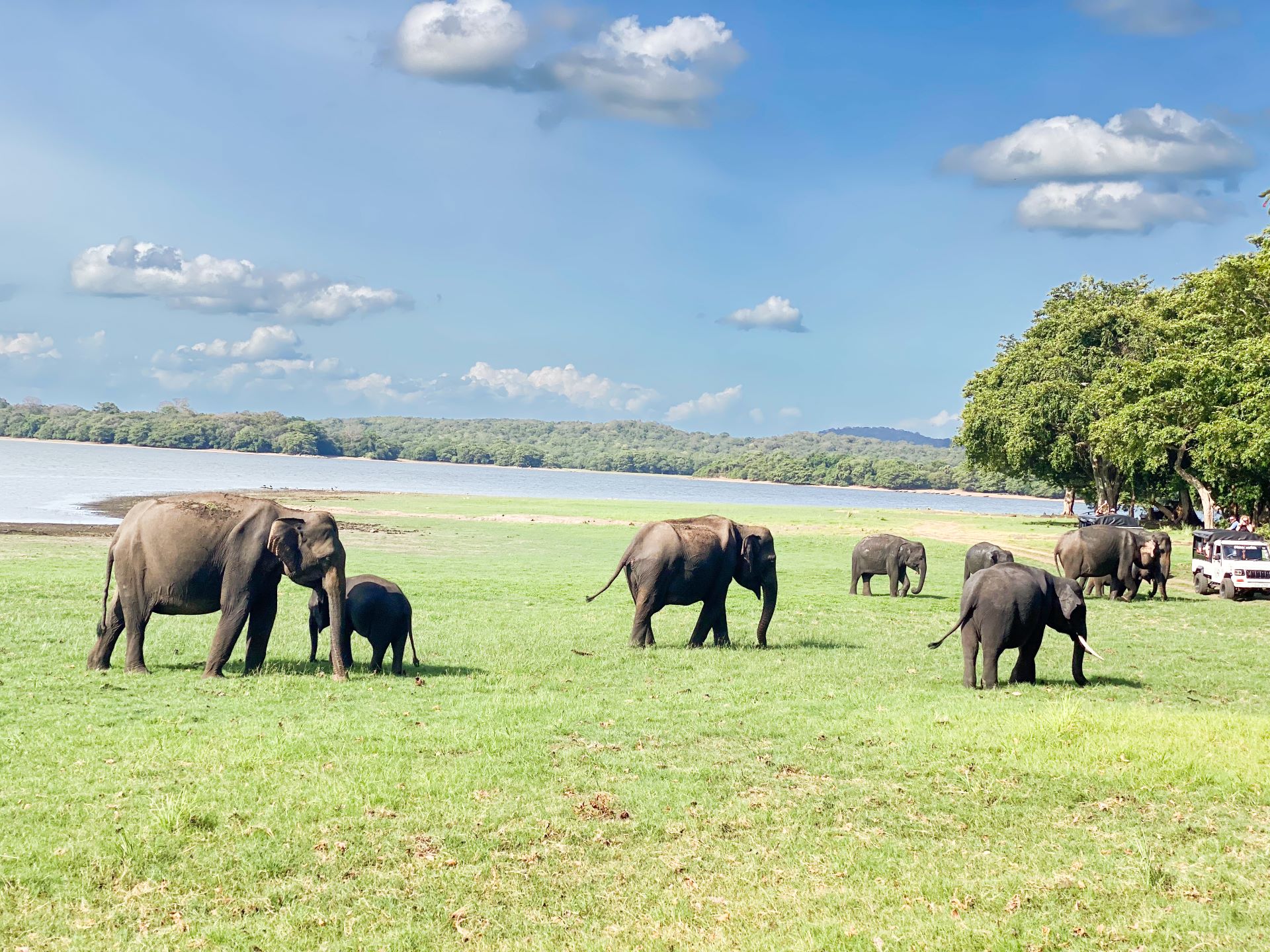
During the 3.5 hour Safari we spotted more than 150 elephants in total, many spotted deers, wild buffalos, Mongoose and Grey Langers. Though we didn’t see any, there are instances where some safari goers have spotted leopards, sloth bears and giant monitor lizards.
You will also spot a large variety of birds, such as the Malabar Pied Hornbills, eagles, and pelicans, wood sandpiper, common sandpiper and many more species of birds. There are so many low flying eagles looking for prey.
Elephants, like humans, are social animals. The females live in herds of eight or more. This was the mating season so there were so many baby elephants who were constantly protected by the females around them, giving them the maximum protection.
Some little ones are so mischievous, chasing each other with their tails and trunks up, throwing mud at each other or pushing each other. You will also see some laying down and throwing mud at themselves to keep themselves cool.
Every 15 to 20 minutes the jeep moves to a new location, there was no chasing of wild animals or unnecessary engine idling so it was a pleasant experience overall unlike the safari we did in Yala.
As it was the mating season, from time to time you would see a giant male approaching the females. The safari guide said that the males go around checking if the female is ready to mate, at one point there was a giant male approaching the few females that our jeep was close to, the sheer size of the male and being so close certainly was an uneasy feeling. As he approached the jeep everyone stayed quietly without making any eye contact. Then it just turned around and went the other way.
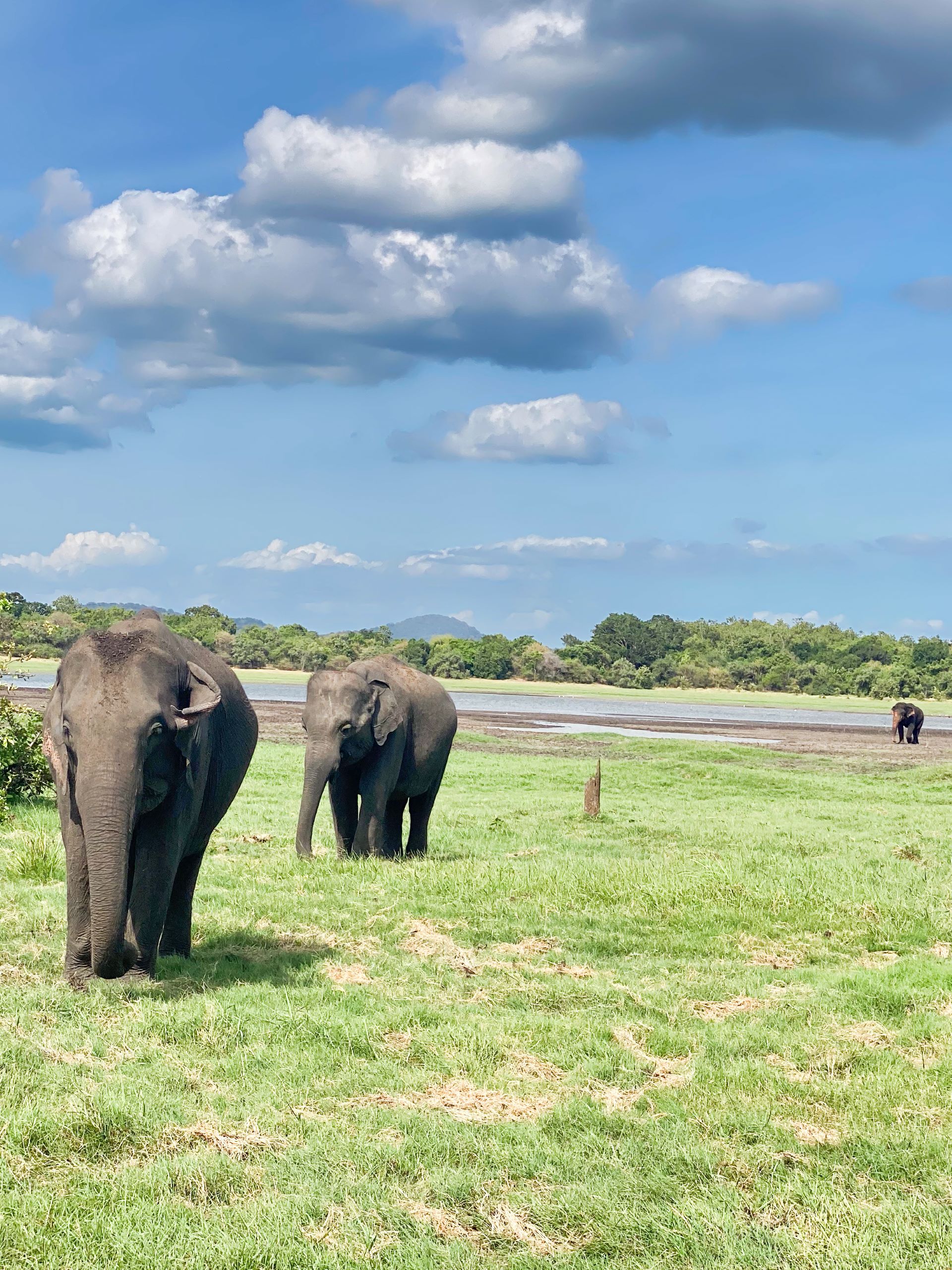
Always remember to remain calm and quiet if the elephant is approaching or walking past. Most of them are used to seeing the Safari jeeps close however be mindful that we are in their environment.
It would be different if an elephant came charging towards the Jeep, then they said to make noise to share the elephant off but luckily we didn’t experience that during this trip.
From time to time you would see a few herbs to elephants going past making sounds. They truly are such fascinating creatures to watch and admire.
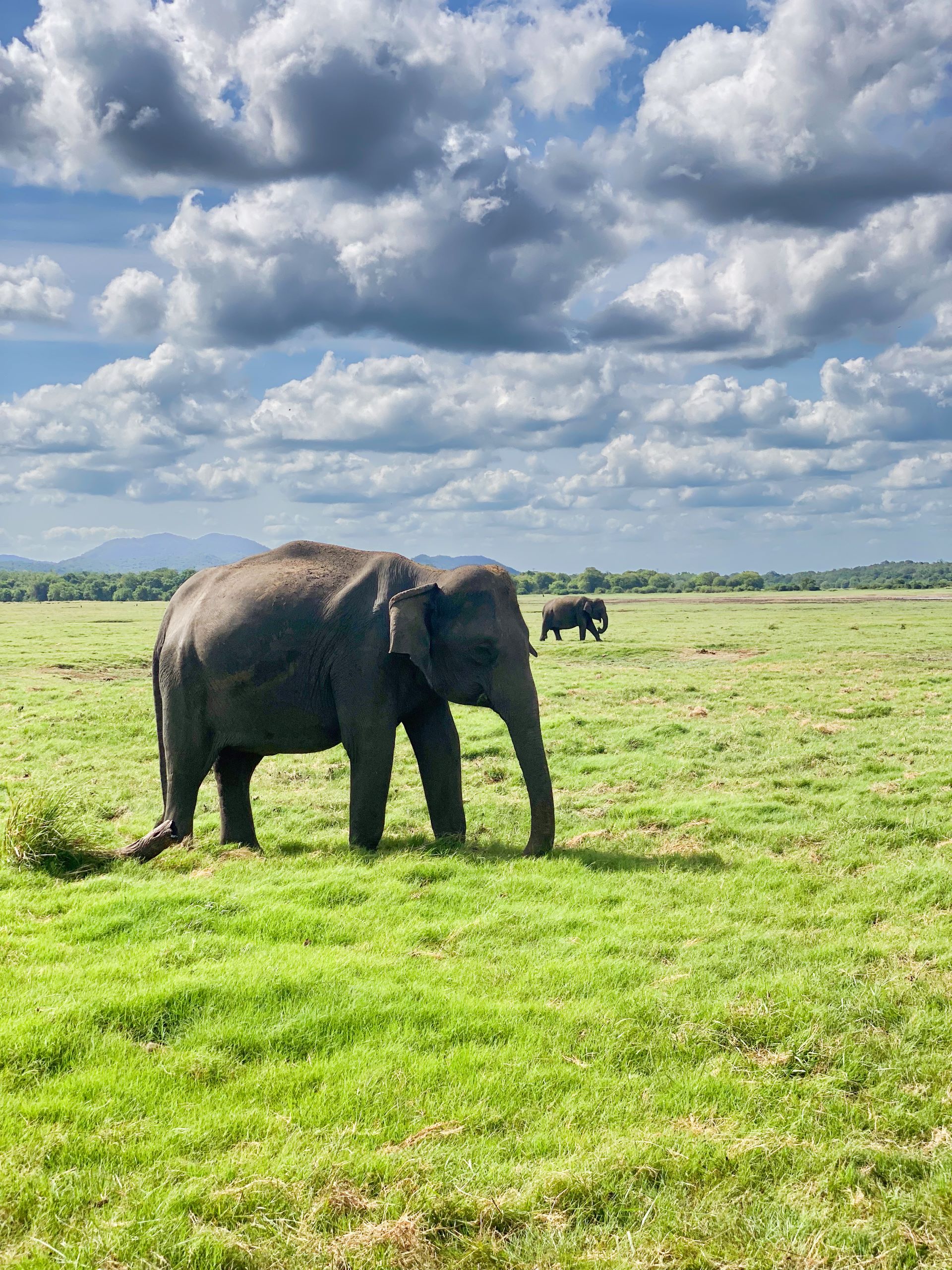

The guide normally gives you enough time to watch the elephants in one spot, then when you’re ready to move on you can tell him and he will drive off to another location.
After watching so many elephants we were ready to head back. The safari jeeps need to leave the national park by 6pm, considering the drive to the entrance is another 20 minutes. It’s best to give enough time.
As we made our way back to the entrance after the 3.5 hour safari we passed more elephants who were now making their way inside the national park into the thick vegetation preparing themselves for the night. It was an experience like no other.
On the drive back we saw spotted deers and wild boars, we were dropped off where we parked the car and we were all ready to call it a day.
On our way back to Dambulla, it was almost dusk and there by this time there were 3 elephants casually standing by the road waiting to get to the other side. They say that lone elephants are a lot more aggressive than those in a herd, so they should never be approached.
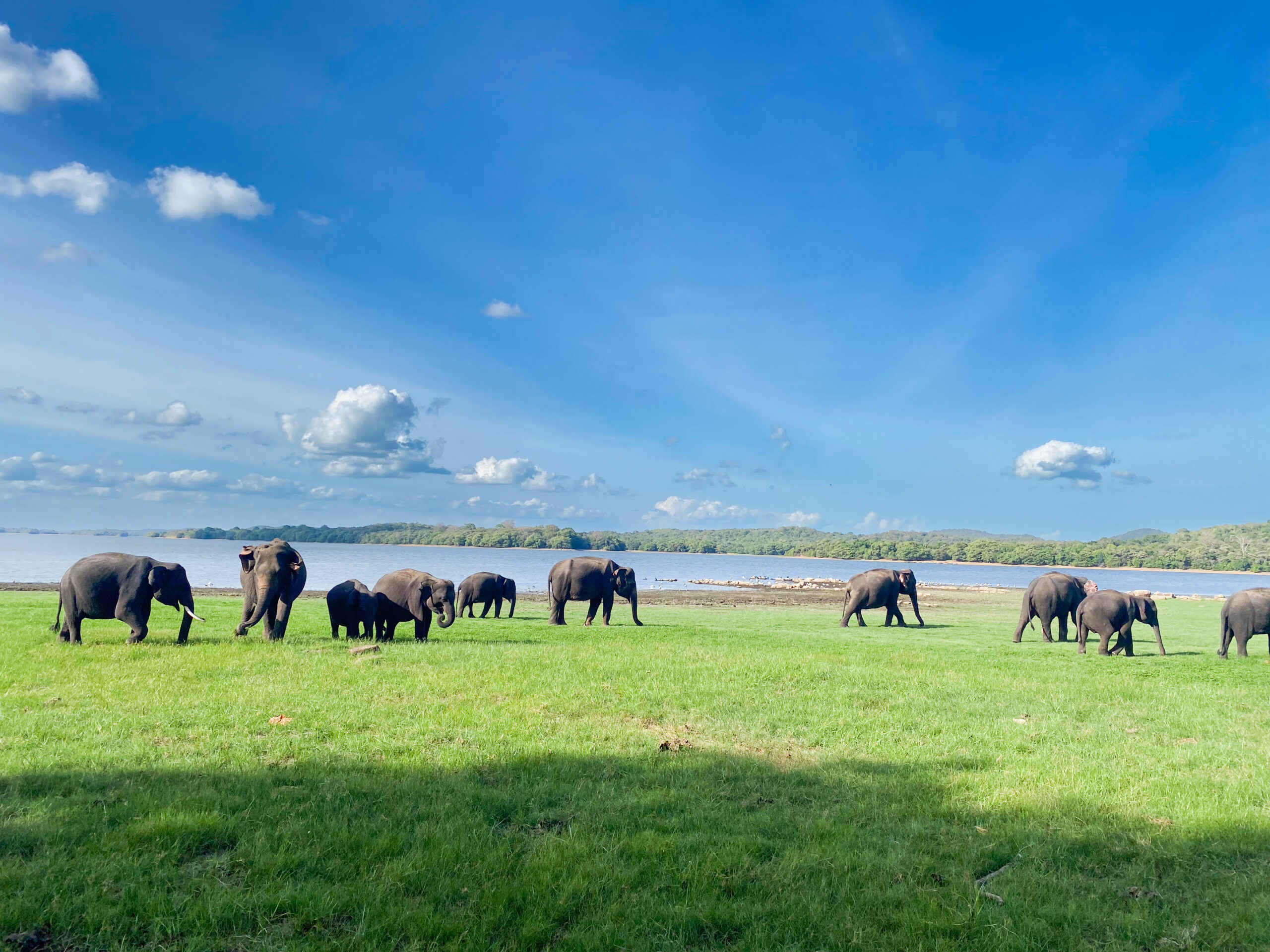
As we were going past one there was a tuk tuk that was parked and filming the elephant who was by the road, making noises but when we looked back we saw the elephant was charging towards them and they drove away just in time.
The Minneriya National Park Safari was one of the best safari experiences I’ve experienced here in Sri Lanka. It is one to remember and an experience like no other. It is said that this annual gathering is the largest elephant gathering in Asia and some say even in the world, but still it definitely is a fenomena to experience first hand and appreciate.
Colombo
Approximately 4.5 – 5 hours by private vehicle
Wear loose comfortable clothing and wear comfortable shoes
Carry a bottle of water with you at all times and if you’re carrying those plastic bottles be sure to dispose of them responsibly as there are bins at the entrance of the national park.
Sigiriya and Dambulla golden temple


